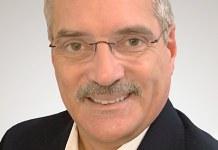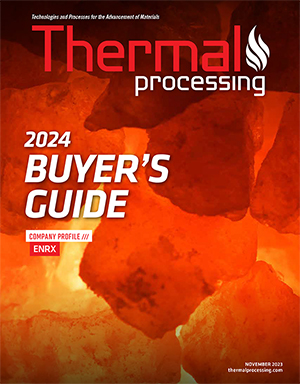
How can Etchform say it is the market leader in titanium etching?
Our process is one that we developed ourselves from the ground up. This makes it different from other processes you will find elsewhere, which often copy and try to evolve existing processes. Also, we started with this large-scale development in the 1990s, which means we have over 30 years’ concentrated focus on titanium etching. It was in the 1990s that we built our own pilot skill etching machine, and based on the results of that, we developed our production scale machine for series production. No other supplier can boast that amount of concentration on the etching of titanium.
In terms of the actual etching process itself, what is it that differentiates what Etchform does from alternative suppliers when it comes to processing titanium?
It’s mainly the etchant chemistry. I would say that 95 to 100 percent of PCE processes for titanium in the world are based on the use of hydrofluoric acid, which is a very hazardous substance. We and a number of our customers didn’t want this chemical in our factory. This was the spur to us looking for other effective etchant chemistries.
Which sectors do you see as having significant demand for etched titanium parts, and why?
There is the medical industry, a major driver here beyond the lightweight and strong nature of material being the fact that it is biocompatible. This makes it an ideal material for implants and pacemaker parts. In this latter application area, the titanium is used inside a closed box, so biocompatibility is less of an issue, but titanium also demonstrates a superior electronic capacity, which drives its use in this instance.
Obviously, the strength-to-weight ratio of titanium is important in industries such as aerospace. Do you cater for this sector as well?
We do aerospace work, some with metals other than titanium, but where titanium is required, it is primarily because of the impressive strength-to-weight ratio. I would highlight two main aerospace applications that we cater for: One is the production of solar cell connectors, which are very, very, thin foils. Here, weight is not that big an issue, so we use metals other than titanium, but because the foils are so thin, PCE is pretty much the only process that can achieve the tolerances required. Another is the production of parts and components for rocket combustion, and here the use of titanium is required due its inherent characteristics.
Quality is obviously key for all applications. What sort of processes do you have at Etchform in terms of metrology and quality control that ensures zero failure rates?
We have a large and highly experienced inspection department. Depending on the application, we do 100 percent inspection. For instance, the electronic parts for pacemakers require 100 percent visual and dimensional inspection. The controls are very strict. Of course, we make sure that our inspection equipment is certified and calibrated frequently. We are also interested in analyzing yields. If we detect yield variation, we instruct an expert team to investigate the process to find the root cause. This is highly sophisticated work, and requires immense expertise, and an innate and complete understanding of the etching process. We have that at Etchform, and success for us is in early detection and correction of issues, which obviously affects the cost and critically the time to produce the parts required at the quality required for end-use applications.
What are the main things that you would highlight as being most important when designing for PCE?
PCE offers several key beneficial characteristics that make it an attractive manufacturing method. Firstly, it enables high-precision and intricate designs, allowing for the production of complex parts with tight tolerances. Secondly, the process is cost-effective, as it eliminates the need for expensive tooling, reducing upfront costs. Thirdly, it is a highly efficient technique that allows for rapid production and quick turnaround times. Furthermore, the method is well-suited for a wide range of materials, including metals and alloys, providing versatility in material selection. Lastly, photochemical etching is a low-stress process that preserves the material’s integrity, resulting in burr-free and distortion-free components, making it ideal for applications where mechanical integrity is crucial.
When designing a part to be made using PCE, designers should be mindful of several key factors. First and foremost, they must consider part complexity, tolerance requirements, and surface finishes, all of which should be carefully addressed to optimize the overall manufacturability and functionality of the part through PCE.
I presume that tolerance attainment varies between the thicknesses of the material and the different types of titanium, but in general terms, what sort of tolerances are you able to repeatably attain with your PCE process?
We advertise ±20 percent of the material thickness for titanium, which is double the tolerances on less-difficult-to-process metals but still better than alternative suppliers. In practice, we achieve significantly better tolerances than that. This is due to the fact we have decades of experience, and we are using an in-house designed process, which means we have a complete understanding unique to Etchform.
MORE INFO www.micrometal.de




























